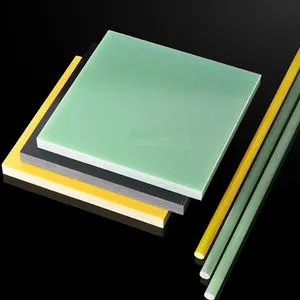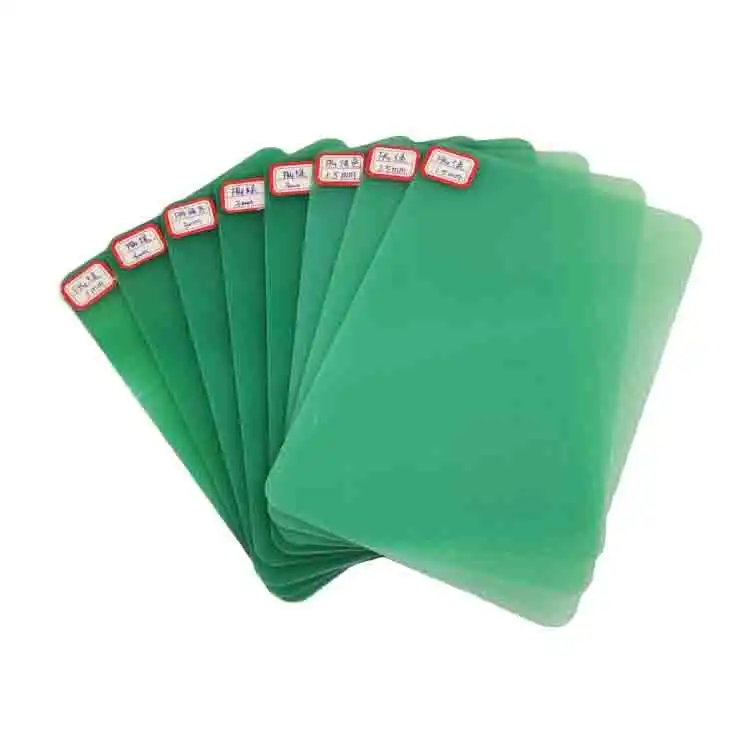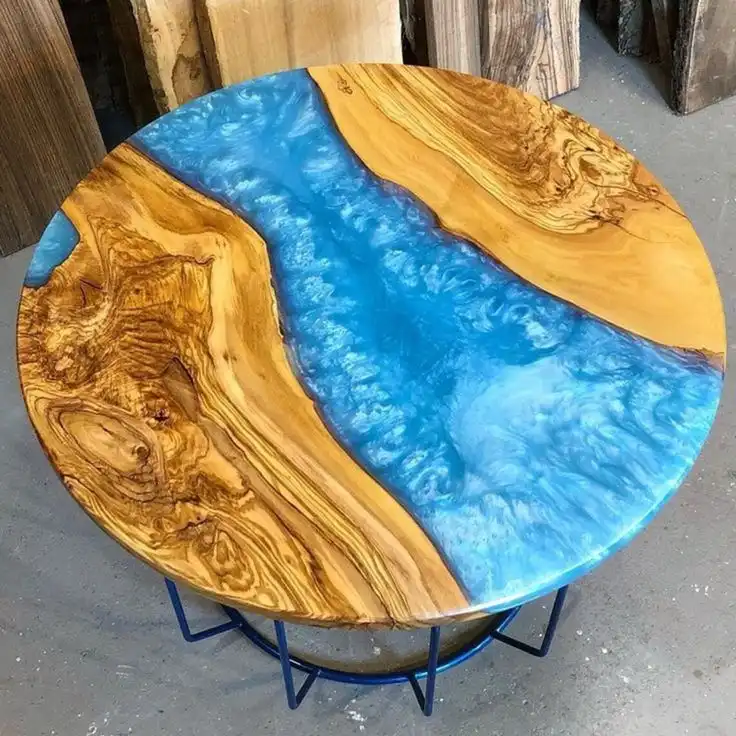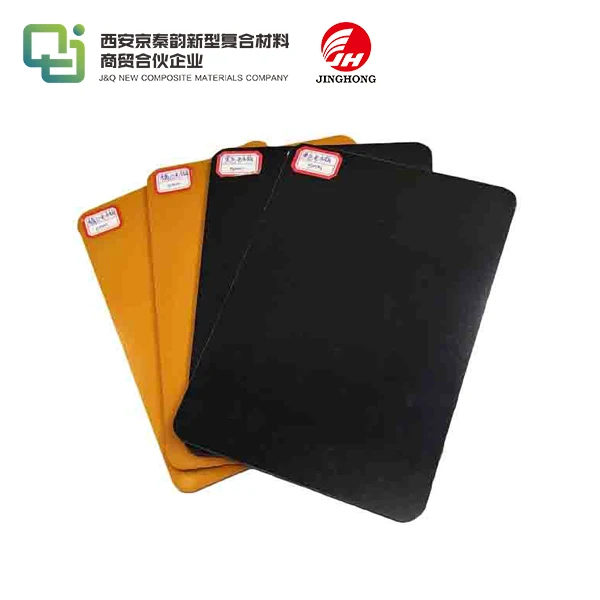Epoxy sheet and fiberglass sheet: application trend of composite materials in 3C field
2025-02-28 16:57:53
The 3C (Computer, Communication, and Consumer Electronics) industry has witnessed a remarkable surge in the application of composite materials, particularly epoxy sheets and fiberglass sheets. These versatile materials are revolutionizing product design and manufacturing processes across the sector. With their exceptional properties such as lightweight construction, superior strength-to-weight ratio, excellent electrical insulation, and thermal stability, epoxy and fiberglass sheets are becoming indispensable in creating cutting-edge 3C devices. From sleek smartphone casings to robust laptop components and intricate printed circuit boards, these composite materials are paving the way for more durable, efficient, and innovative electronic products that meet the ever-evolving demands of consumers worldwide.
The Rise of Composite Materials in 3C Manufacturing
Evolution of 3C Material Requirements
The 3C industry has undergone a significant transformation in recent years, driven by consumer demands for lighter, thinner, and more durable electronic devices. This shift has necessitated the adoption of advanced materials that can meet these exacting requirements while maintaining optimal performance. Composite materials, particularly epoxy sheets and fiberglass sheets, have emerged as the ideal solution to address these challenges.
Traditional materials like metals and plastics, while still widely used, often fall short in providing the perfect balance of strength, weight, and versatility required in modern 3C applications. Composite materials, on the other hand, offer a unique combination of properties that make them exceptionally well-suited for this rapidly evolving industry.
Advantages of Epoxy and Fiberglass Sheets
Epoxy sheets and fiberglass sheets boast an impressive array of characteristics that make them invaluable in 3C manufacturing:
- Lightweight: These composite materials offer significant weight reduction compared to traditional metals, enabling the production of more portable devices.
- High Strength-to-Weight Ratio: Despite their low weight, epoxy and fiberglass sheets provide excellent structural integrity, ensuring durability and longevity of 3C products.
- Electrical Insulation: Both materials exhibit superior electrical insulation properties, crucial for preventing short circuits and ensuring safe operation of electronic devices.
- Thermal Stability: Composite sheets maintain their structural and electrical properties across a wide temperature range, enhancing the reliability of 3C products in various environmental conditions.
- Customizability: Manufacturers can tailor the properties of these materials to meet specific application requirements, offering unparalleled flexibility in product design.
Impact on 3C Product Innovation
The adoption of epoxy and fiberglass sheets has catalyzed a wave of innovation in the 3C sector. Product designers and engineers now have greater freedom to create sleeker, more ergonomic devices without compromising on functionality or durability. This has led to the development of ultra-thin laptops, foldable smartphones, and wearable technology that were previously unfeasible with traditional materials.
Moreover, the use of these composite materials has enabled manufacturers to improve the overall performance and lifespan of 3C products. By incorporating epoxy and fiberglass sheets into critical components, companies can enhance device resilience, reduce overheating issues, and minimize electromagnetic interference, resulting in superior user experiences and increased customer satisfaction.
Key Applications of Epoxy and Fiberglass Sheets in 3C Products
Smartphone and Tablet Casings
One of the most visible applications of epoxy sheets and fiberglass sheets in the 3C industry is in the manufacturing of smartphone and tablet casings. These composite materials have revolutionized the design and functionality of mobile devices, allowing for thinner, lighter, and more durable products.
Epoxy sheets, reinforced with fiberglass, provide an excellent balance of strength and flexibility, making them ideal for creating impact-resistant casings that protect delicate internal components. The ability to mold these materials into complex shapes also enables manufacturers to produce ergonomic designs that enhance user comfort and aesthetics.
Furthermore, the electrical insulation properties of these composite materials contribute to improved signal reception and reduced interference, enhancing overall device performance. The thermal stability of epoxy and fiberglass sheets also helps in managing heat dissipation, addressing a common concern in compact electronic devices.
Printed Circuit Boards (PCBs)
Epoxy and fiberglass sheets play a crucial role in the production of printed circuit boards, which form the backbone of all electronic devices. The most common type of PCB substrate is FR-4, a composite material made of woven fiberglass cloth impregnated with epoxy resin. This combination offers several advantages for PCB manufacturing:
- Excellent electrical insulation, preventing short circuits between conductive layers
- High mechanical strength, ensuring the board can withstand the stresses of component mounting and operation
- Low moisture absorption, maintaining the integrity of electrical connections
- Good dimensional stability across varying temperatures, crucial for maintaining precise component alignment
- Fire retardancy, enhancing the safety of electronic devices
The versatility of epoxy and fiberglass composites also allows for the production of flexible PCBs, enabling the creation of more compact and uniquely shaped electronic devices.
Laptop and Computer Components
In the realm of personal computers and laptops, epoxy and fiberglass sheets find numerous applications. These materials are used in the construction of laptop chassis, providing a lightweight yet sturdy frame that protects internal components while allowing for slim profiles.
Composite materials are also utilized in the manufacturing of internal structural components, such as motherboard trays and hard drive enclosures. Their excellent vibration-damping properties help protect sensitive components from mechanical shocks, enhancing the overall durability and reliability of the device.
Moreover, the thermal management capabilities of epoxy and fiberglass composites make them valuable in the design of heat sinks and thermal interfaces. By efficiently dissipating heat from processors and other high-power components, these materials contribute to improved performance and longevity of computer systems.

Future Trends and Innovations in Composite Materials for 3C Applications
Advancements in Nano-Composite Technology
The future of epoxy and fiberglass sheets in the 3C industry is closely tied to advancements in nano-composite technology. Researchers are exploring ways to incorporate nanomaterials such as carbon nanotubes, graphene, and nanocellulose into epoxy and fiberglass matrices. These nano-enhanced composites promise to deliver even greater strength, improved electrical and thermal conductivity, and enhanced flame retardancy.
For instance, graphene-reinforced epoxy sheets could potentially offer unprecedented levels of thermal management, addressing the ever-present challenge of heat dissipation in compact electronic devices. Similarly, carbon nanotube-infused fiberglass composites may provide superior electromagnetic shielding, crucial for the development of 5G-enabled devices.
Bio-Based and Sustainable Composite Materials
As natural concerns proceed to shape industry practices, there is a developing focus on creating feasible options to conventional epoxy and fiberglass composites. Bio-based epoxy resins determined from renewable assets such as vegetable oils and lignin are gaining traction. These eco-friendly choices offer comparable execution to petroleum-based epoxies whereas diminishing the carbon footprint of 3C items.
Similarly, researchers are exploring natural fibers like flax, hemp, and jute as potential replacements for glass fibers in composite materials. These bio-based composites not only offer environmental benefits but also introduce unique aesthetic qualities that can differentiate products in the competitive 3C market.
Smart and Multifunctional Composites
The integration of smart materials and sensors into epoxy and fiberglass composites is opening up new possibilities for 3C product functionality. Self-healing composites, which can repair minor damage autonomously, could significantly enhance the durability and lifespan of electronic devices.
Moreover, the development of multifunctional composites that combine structural properties with additional functionalities such as energy storage or sensing capabilities is an area of active research. For example, structural battery composites could potentially serve as both the device casing and power source, revolutionizing the design of portable electronics.
These innovations in composite materials are set to drive the next wave of advancements in 3C product design, enabling the creation of more efficient, durable, and feature-rich electronic devices.
Conclusion
The application of epoxy sheets and fiberglass sheets in the 3C field represents a noteworthy trend in composite material utilization. These flexible materials have become indispensably to the generation of cutting-edge electronic devices, offering a idealize adjust of strength, lightweight development, and functionality. As the 3C industry proceeds to evolve, driven by consumer requests for more progressed and durable items, the part of composite materials is set to extend advance. With continuous investigate in nano-composites, bio-based materials, and smart composites, the future guarantees even more imaginative applications that will shape the next generation of computers, communication gadgets, and customer gadgets.
Contact Us
To learn more about our high-quality epoxy and fiberglass sheets (FR4 epoxy sheet,3240 epoxy sheet) for 3C applications, please contact us at info@jhd-material.com. Our team of experts is ready to assist you in finding the perfect composite material solutions for your manufacturing needs.
References
1. Zhang, L., & Wang, X. (2020). "Advanced Composite Materials in 3C Electronics: A Comprehensive Review." Journal of Materials Science and Technology, 36(5), 813-831.
2. Chen, Y., et al. (2019). "Epoxy-Based Composites for Electronic Applications: Processing, Properties, and Future Trends." Progress in Materials Science, 100, 1-43.
3. Sathishkumar, T., & Naveen, J. (2021). "Fiberglass Reinforced Polymer Composites in 3C Industry: Current Status and Future Prospects." Composites Part B: Engineering, 215, 108749.
4. Liu, H., & Wu, Q. (2018). "Nanocomposites for Electronics Packaging: Enhancing Thermal and Electrical Properties." Composites Science and Technology, 168, 217-233.
5. Mohanty, A. K., et al. (2022). "Sustainable Composites for 3C Applications: Challenges and Opportunities." Composites Part A: Applied Science and Manufacturing, 153, 106706.
6. Kim, J., & Lee, J. (2020). "Smart Composite Materials in Consumer Electronics: Recent Advances and Future Directions." Advanced Materials Technologies, 5(9), 2000444.







